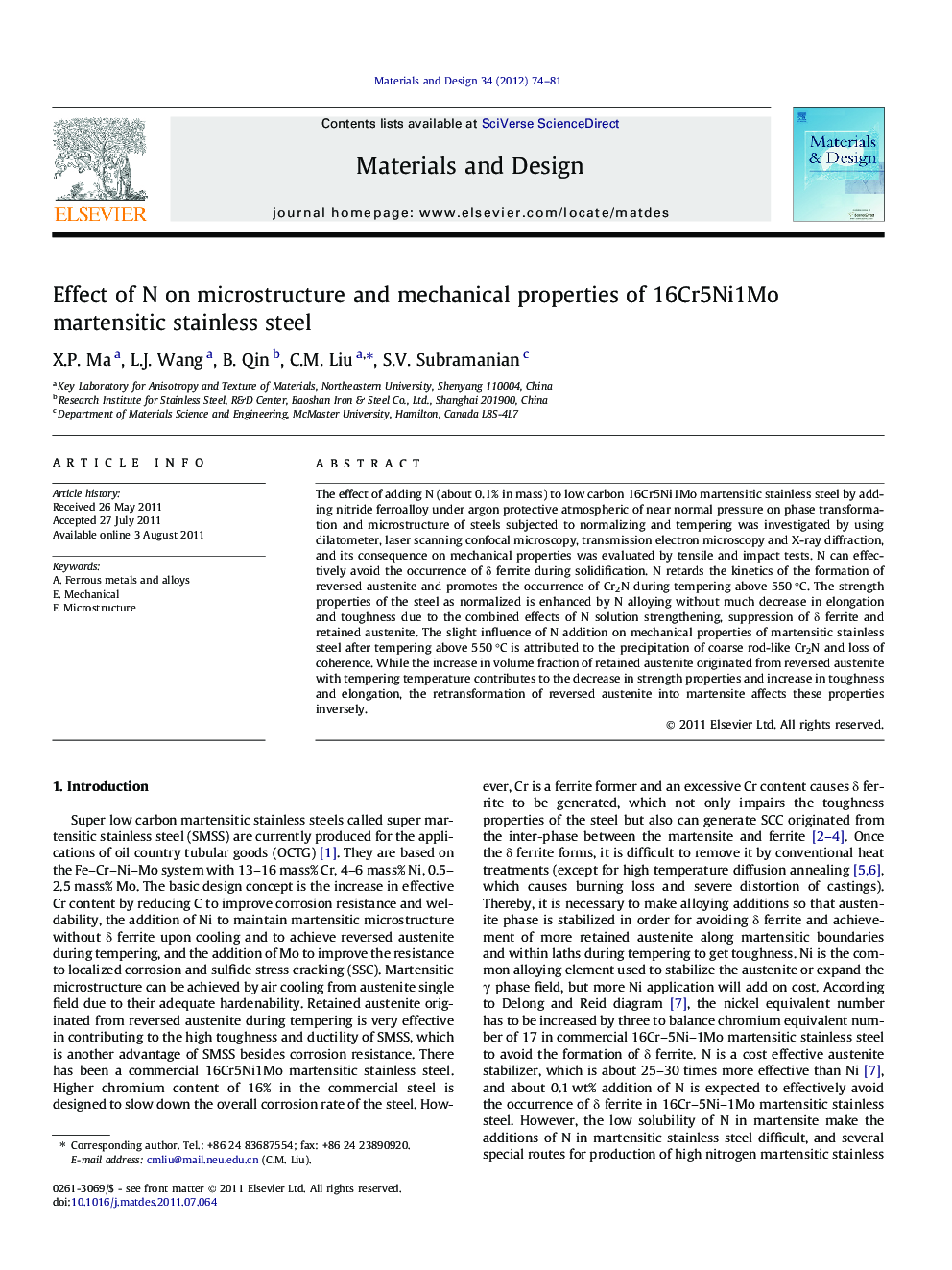| Article ID | Journal | Published Year | Pages | File Type |
|---|---|---|---|---|
| 831014 | Materials & Design (1980-2015) | 2012 | 8 Pages |
The effect of adding N (about 0.1% in mass) to low carbon 16Cr5Ni1Mo martensitic stainless steel by adding nitride ferroalloy under argon protective atmospheric of near normal pressure on phase transformation and microstructure of steels subjected to normalizing and tempering was investigated by using dilatometer, laser scanning confocal microscopy, transmission electron microscopy and X-ray diffraction, and its consequence on mechanical properties was evaluated by tensile and impact tests. N can effectively avoid the occurrence of δ ferrite during solidification. N retards the kinetics of the formation of reversed austenite and promotes the occurrence of Cr2N during tempering above 550 °C. The strength properties of the steel as normalized is enhanced by N alloying without much decrease in elongation and toughness due to the combined effects of N solution strengthening, suppression of δ ferrite and retained austenite. The slight influence of N addition on mechanical properties of martensitic stainless steel after tempering above 550 °C is attributed to the precipitation of coarse rod-like Cr2N and loss of coherence. While the increase in volume fraction of retained austenite originated from reversed austenite with tempering temperature contributes to the decrease in strength properties and increase in toughness and elongation, the retransformation of reversed austenite into martensite affects these properties inversely.
► N suppresses the occurrence of δ-ferrite. ► N increases the strength of the as normalized steel without decrease in toughness. ► N retards the kinetics of reversed austenite formation. ► Tempering above 550 °C promotes the precipitation of Cr2N, decreasing the toughness.
